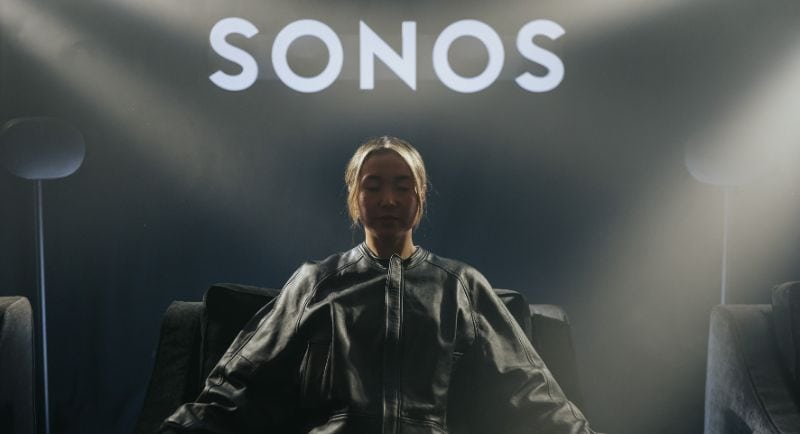By Tim Baggott, executive creative director of Amplify
The past couple of years have seen brands invest more heavily in their sonic identities. This was brought on by a number of factors, including the rise in adoption of voice-controlled services like Google Assistant, Siri, and Alexa; sound-optimised platforms like TikTok and the proliferation of podcasts. From a new era of podcast-friendly ads, to short, memorable “audio logos” (think Netflix’s “ta-dum”) and carefully considered audio micro-interactions built into digital user interfaces, most brands are now developing in-depth sonic brand guidelines.
For an industry which historically has had a strong visual bias, this new focus on sound provides exciting opportunities. Sound is incredibly effective when it comes to recall, and this is because human beings have evolved to have strong emotional responses to what we hear. According to Dr. Sol Marghzar, Director of Audiology at sonic branding agency Stephen Arnold Music, “Emotions are attached to sounds through experience, and emotions triggered by experience provoke certain thoughts and behaviours”.
As part of their investment in sound, Coca-Cola recently announced it would be setting up its own music studio to create original music. Josh Burke, global head of music and culture marketing at Coca-Cola describes taking this step as “moving away philosophically from ads towards experiences”.
Beyond the music, the catchy jingles, and reassuring bleeps and bloops of app interfaces, sound can yield more unique opportunities for brands to emotionally connect with audiences through experiences. The key to this is not only considering what people are listening to, but how they are listening.

Throughout human history communal sound-based experiences, from sharing stories to musical rituals and performances have been integral to creating, developing, and passing on culture. But, with the introduction of personal audio devices and headphones, along with the personalisation offered by streaming services, the listening experience has become increasingly isolated. As culture and brand experience specialists, Amplify is a huge believer in the power of human connection and shared experience. In a post-pandemic world, people are searching for a sense of connection as well as awe-inspiring experiences and sound can enable them.
UK and Australia based Darkfield create audio-led immersive theatre experiences that take place inside retrofitted shipping containers. They use binaural audio, sensory deprivation, and special effects to “place the audience at the centre of a narrative, completely at odds with the space it occupies”. Participants are plunged into a darkness with their imagination filling in the visuals to accompany the sound. The experience is akin to a high-intensity theme park ride, an exhilarating new type of shared experience that is as entertaining to undertake as it is to discuss afterwards.
In the US, David Byrne’s new Broadway musical Here Lies Love just opened (July 2023). The visual design of the show has received a lot of attention, for example, set designer David Korins removed the seats of the theatre’s orchestra section to make space for a glitzy nightclub dance floor. But, along with the visuals, the show is offering an entirely more immersive experience to the audience through sound. By incorporating spatial audio technology into the show, audience members have a sense of being submerged in music from all directions. Voices sound like they’re coming from opposite ends of the room and the nature of the sound is no longer limited to the physical restrictions of the building, providing an experience full of surprises.

At Amplify, we had the opportunity to explore the potential of spatial audio with our partner Sonos to launch the brand’s new spatial audio speaker, Era 300. Sometimes a moment of music can cause a physical reaction in the form of goosebumps or chills, a frisson. Through scientific research, certain properties of sound and musical composition have been identified as common triggers of frisson, with spatial sound being one of them. We collaborated with Grammy-winning producer Eric J Dubowsky to combine art, science and Sonos spatial audio hardware to create “Frisson Trigger”, an original piece of music engineered to give listeners goosebumps.
To launch the campaign we held an event in Sydney that featured a communal listening experience of “Frisson Trigger”. It was great to hear participants’ varying accounts of the physical and emotional responses they had to the track, but what was equally heart-warming was how much they had enjoyed the simple act of “sitting in the dark and listening together”.
The recent advance in spatial audio is an example of how new technology is enabling not just better quality and more immersive sound, but is also giving people a compelling reason to listen together again. As the industry continues to explore the emotive power of sound, we should be thinking beyond guidelines and looking to express brands’ values and beliefs with new ways of listening that foster connection through awe-inspiring shared experiences and memories.
–
Tim Baggott is the executive creative director of Amplify. He career has seen him work across the automotive, fashion, entertainment, FMCG, tech, travel and charity sectors. Baggott has led and learnt from creative teams in the UK, USA, Sweden, Australia and New Zealand. He is also acted as a mentor and judge for a variety of organisations, including AKQA Future Lions, D&AD New Blood Academy, D&AD New Blood Shift, The Dots, The Drum and Creative Circle.
–
Top image: Tim Baggott
